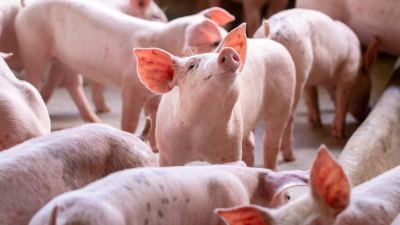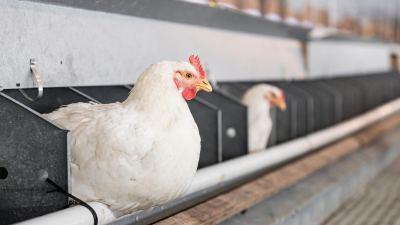Signs of heat stress in dairy cattle

Heat stress is a condition we can be prepared for. It is no surprise that heat stress can cost you production and profits. We are adapting our herds to cope with increased temperatures and humidity, the cause of heat stress, which costs the U.S. dairy industry over $900 million a year.
Identifying the first signs of heat stress in cattle can help reduce the negative effects on animal comfort and performance. Below are the top five areas you should be watching to identify when your cows are entering heat stress.
1. Temperature humidity index above 72
The temperature-humidity index (THI) is a commonly used tool to assess the combined impact of temperature and humidity on dairy cows. In general, THI values above 72 are considered mild heat stress conditions, above 80 are rated as moderate, and above 90 indicate severe conditions. It is important to note that heat stress can start well below 80 degrees when humidity is high. Also note that even when humans do not feel stressed, cows very well may be.

2. Reduced dry matter intake
Cows who experience heat stress may have less appetite, spending less time at the feed bunk and showing disinterest in consuming their usual ration. This can lead to a decline in milk production.
3. Behavior changes
Respiration rate: Heat-stressed cows may breathe more rapidly or pant excessively as they try to regulate their body temperature.
Body temperature: Measuring body temperature is fundamental to assessing heat stress in dairy cows, especially when the cows are in the holding pen. A cow’s natural body temperature will increase by 3° F in 20 minutes in a holding pen with no cooling. But a cow’s body temperature will drop by 3.5° F in the same 20 minutes when fans and soaker systems are used.
Standing time: Heat-stressed cows tend to reduce their standing time, preferring to lie down frequently as a way to dissipate heat. Productions that use wearable technologies can see this evidence through data, but the behavior can also be identified by walking the barns.
4. Decreased milk production
Cows under heat stress may reduce their dry matter intake. Since this in turn reduces milk production, monitoring feed intake and providing the best-quality nutritional solutions are both vital during the summer.
5. Reproductive challenges
Cows experiencing heat stress may exhibit reduced conception rates, longer calving intervals or irregular estrus cycles. Monitoring these reproductive parameters can help identify the types and extent of heat stress impacts on the herd’s reproductive efficiency.
Preventative measures
- Shade: Access to shade structures or natural shade helps cows seek relief from direct sunlight and reduces the danger of high temperatures.
- Ventilation: Proper airflow and ventilation systems within barns or housing facilities help dissipate heat and enhance cow comfort.
- Cooling: Cooling mechanisms such as fans, misters or sprinklers help to lower ambient temperatures.
- Water: Heat-stressed cows require increased water intake for thermoregulation. Ensuring access to clean water throughout the day is vital to meeting their needs.
- Nutrition: When temperatures are high, modify the diet to include more easily digestible nutrition sources. For instance, Alltech’s Yea-Sacc® 1026 stabilizes rumen pH, keeping the rumen microbiome plentiful and active, which enhances feed digestibility overall.
- Technology: Advancements in tech have provided valuable tools for tracking individual cow data. These devices, equipped with sensors to track body temperature, activity levels and rumination patterns, are proving increasingly helpful in identifying cows entering heat stress. Technology also goes beyond wearables to temperature-activated fans, sprinklers, and curtains installed in the barn. Routine maintenance and proper installation of these technologies are critical to receive their full benefit.















